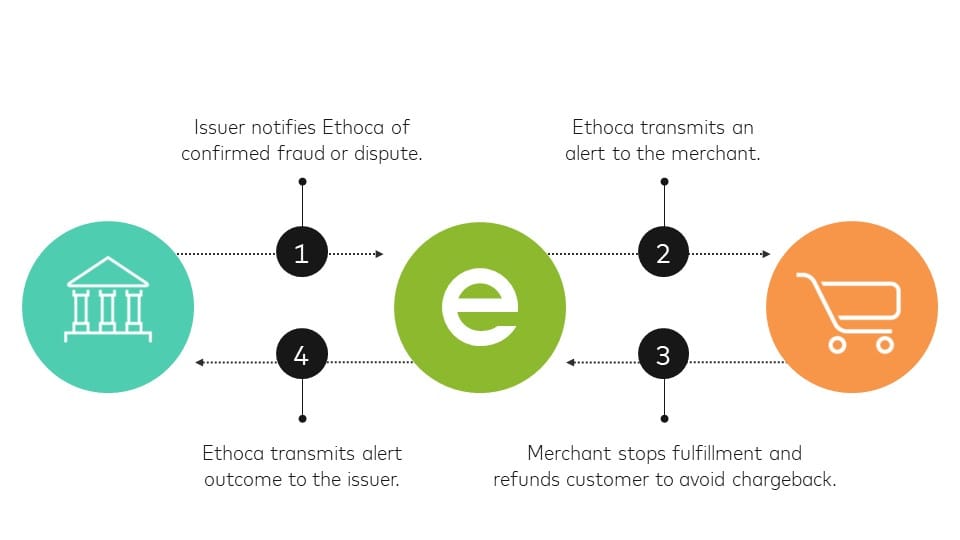
Recurring payments have become increasingly popular in today's digital world, offering convenience for customers and improved cash flow management for businesses. But what exactly are recurring payments, and how do they work? In this blog post, we will delve into the definition of recurring payments, explore their various types and benefits, and discuss the process of setting them up. We will also address common issues that may arise with recurring payments and provide solutions on how to handle them. Whether you are a customer looking to understand this payment method or a business owner considering implementing recurring payments, this guide will equip you with all the knowledge you need. So, let's dive in and unravel the world of recurring payments together!
Introduction to Recurring Payments: What They Are and How They Work
Recurring payments have revolutionized the way we handle transactions in today's digital age. In this section, we will provide a comprehensive introduction to recurring payments, explaining what they are and how they work.
Definition of Recurring Payments
Recurring payments, also known as subscription payments or automatic payments, refer to the process of charging customers on a regular basis for goods or services rendered. Instead of requiring customers to make one-time payments for each transaction, recurring payments allow for ongoing, automated billing.
Different Types of Recurring Payments
Recurring payments can take various forms, depending on the nature of the business and the agreement between the merchant and the customer. Here are some common types of recurring payments:
Subscription-based Payments: This type of recurring payment is commonly used by businesses that offer ongoing services or content, such as subscription boxes, streaming platforms, or software-as-a-service (SaaS) providers.
Membership Fees: Many organizations, clubs, and associations charge recurring membership fees to provide continuous access to their facilities, resources, or exclusive benefits.
Installment Plans: Some businesses offer customers the option to pay for a product or service in installments over a specific period, spreading the cost and making it more affordable.
Donations: Non-profit organizations often rely on recurring donations to support their ongoing efforts and initiatives.
Examples of Recurring Payments
To understand recurring payments better, let's consider a few examples:
Online Streaming Services: Platforms like Netflix or Spotify offer subscription-based recurring payments, allowing users to access their vast libraries of movies, TV shows, or music for a monthly fee.
Gym Memberships: Fitness centers typically charge recurring membership fees, granting customers access to their facilities, classes, and equipment.
Software Subscriptions: Companies providing software solutions, such as Adobe Creative Cloud or Microsoft Office 365, often require customers to pay a recurring fee to access and use their software.
Utility Bills: Many households pay their electricity, water, or internet bills through recurring payments, ensuring that their services remain uninterrupted.
Now that we have a clear understanding of recurring payments and their various forms, let's explore the benefits they offer to both customers and businesses.
Understanding the Meaning of Recurring Payments
Recurring payments have become an integral part of modern commerce, offering benefits to both customers and businesses. In this section, we will delve deeper into the meaning of recurring payments, their purpose, and how they function.
Definition of Recurring Payments
Recurring payments can be defined as a payment method where customers authorize businesses to automatically charge their accounts or credit cards at regular intervals for ongoing products or services. This eliminates the need for customers to manually make payments for each transaction, providing convenience and streamlining the payment process.
Purpose of Recurring Payments
The primary purpose of recurring payments is to establish a seamless and automated billing system for businesses that offer ongoing services, subscriptions, or products with recurring charges. Instead of relying on customers to remember to make payments, recurring payments ensure a consistent revenue stream for businesses while simplifying the payment process for customers.
How Recurring Payments Work
The process of recurring payments typically involves three main parties: the customer, the business, and the payment processor. Here's a step-by-step overview of how recurring payments work:
Customer Authorization: To initiate recurring payments, customers must provide their consent and authorize the business to charge their account or credit card on an ongoing basis. This is usually done by filling out an online form, agreeing to the terms and conditions, and providing payment information.
Payment Processor Integration: The business partners with a payment processor that facilitates the recurring payment transactions. This integration enables the secure and automated processing of recurring payments.
Payment Schedule Setup: The business establishes a payment schedule, specifying the frequency (e.g., monthly, quarterly, annually) and the amount to be charged. This schedule is configured within the payment processor's system.
Automatic Billing: Once the payment schedule is set up, the payment processor automatically charges the customer's account or credit card according to the specified frequency and amount. The customer will receive notifications or receipts for each successful payment.
Customer Account Management: Customers have the option to manage their recurring payments by accessing their accounts, making changes to their payment information, or canceling the recurring payment arrangement if desired.
By understanding the meaning and process of recurring payments, we can now explore the various benefits they offer to both customers and businesses.

Benefits of Using Recurring Payments
Recurring payments offer numerous advantages for both customers and businesses. In this section, we will explore the benefits of using recurring payments and how they can enhance the payment experience for all parties involved.
Convenience for Customers
One of the primary benefits of recurring payments is the convenience they offer to customers. Here are some key advantages:
Time-saving: With recurring payments, customers no longer need to manually initiate payments for each transaction. This saves time and effort, especially for services or subscriptions that require regular payments.
Avoiding Late Payments: Recurring payments ensure that customers never miss a payment deadline. This eliminates the risk of late fees, penalties, or service interruptions due to missed payments.
Seamless Experience: By automating payments, customers enjoy a seamless and hassle-free experience. They can focus on enjoying the product or service without the worry of remembering to make payments.
Flexibility and Control: Customers usually have the ability to manage their recurring payments, including updating payment information, adjusting payment frequencies, or canceling the arrangement if needed. This provides flexibility and control over their payment preferences.
Predictable Income Stream for Businesses
Recurring payments also offer significant benefits to businesses. Here's how they can positively impact a company's financial management:
Predictable Cash Flow: Recurring payments provide businesses with a steady and predictable income stream. This helps in better financial planning, allowing businesses to allocate resources effectively and make informed decisions for growth.
Improved Revenue Stability: By relying on recurring payments, businesses can reduce the impact of seasonal fluctuations or market uncertainties. This stability in revenue ensures a more sustainable business model.
Customer Retention: When customers opt for recurring payments, it indicates a commitment to the product or service. This increases customer loyalty and reduces churn rates, leading to improved customer retention for businesses.
Cost Savings: Automating payments through recurring billing reduces administrative costs associated with manually processing transactions. This allows businesses to allocate resources more efficiently and focus on core operations.
Recurring payments provide convenience, financial stability, and improved customer retention for businesses. In the next section, we will discuss the process of setting up recurring payments and the key considerations involved.
How to Set Up Recurring Payments
Setting up recurring payments involves several steps to ensure a smooth and efficient process. In this section, we will guide you through the necessary considerations and actions required to establish recurring payments for your business.
Selecting a Payment Processor
The first step in setting up recurring payments is choosing a reliable payment processor that supports recurring billing. Consider the following factors when selecting a payment processor:
Recurring Payment Features: Ensure that the payment processor offers robust features specifically designed for recurring payments, such as automated billing, payment scheduling, and customer management tools.
Security and Compliance: Verify that the payment processor adheres to industry-standard security measures to protect sensitive customer data. They should also comply with relevant payment regulations, such as PCI-DSS (Payment Card Industry Data Security Standard).
Integration Options: Check if the payment processor seamlessly integrates with your existing business systems, such as your website, e-commerce platform, or accounting software. This integration streamlines the recurring payment process and enhances efficiency.
Pricing Structure: Review the pricing structure of the payment processor, including any setup fees, transaction fees, or monthly subscription costs. Evaluate whether the pricing aligns with your business needs and budget.
Setting Up a Payment Schedule
Once you have chosen a payment processor, the next step is to establish a payment schedule. Consider the following aspects when setting up the payment schedule:
Frequency: Determine how often you want to charge customers. Common options include monthly, quarterly, annually, or custom intervals based on your business model.
Amount: Decide on the amount to be charged for each payment. This can be a fixed amount or variable based on the customer's usage or subscription tier.
Trial Periods or Discounts: If applicable, consider offering trial periods or introductory discounts to attract new customers and encourage them to sign up for recurring payments.
Payment Notifications: Configure automated notifications to inform customers about upcoming payments, successful transactions, or failed payments. This keeps customers informed and helps maintain a transparent payment process.
Customer Authorization
Obtaining customer authorization is crucial before initiating recurring payments. Ensure that you follow these best practices:
Clearly Communicate Terms and Conditions: Provide customers with transparent and concise information about the recurring payment arrangement, including the payment frequency, amount, and duration. Make sure they understand and agree to these terms.
Obtain Consent: Implement a clear process for customers to provide their consent for recurring payments. This can be through online forms, checkboxes during the checkout process, or signed agreements for offline transactions.
Securely Store Payment Information: If you store customer payment information, ensure that you comply with data protection regulations and maintain robust security measures to safeguard sensitive data.
Easy Cancellation Process: Provide customers with a simple and accessible method to cancel their recurring payment arrangement if they choose to do so. This builds trust and enhances the customer experience.
By following these steps, you can successfully set up recurring payments for your business. In the next section, we will address common issues that may arise with recurring payments and provide solutions to handle them effectively.
Common Issues and How to Address Them
While recurring payments offer numerous benefits, there are potential challenges that businesses and customers may encounter. In this section, we will discuss common issues related to recurring payments and provide effective solutions to address them.
Failed Payments
Insufficient Funds: Sometimes, customers may not have sufficient funds in their accounts to cover the recurring payment. In such cases, it is important to have a system in place to handle failed payments.
- Solution: Set up automated notifications to notify customers about the failed payment and provide instructions for updating their payment information. Retry the payment after a specified period, and consider implementing a grace period policy to avoid immediate service disruptions.
Expired or Invalid Payment Methods: Customers may forget to update their payment information, resulting in failed payments.
- Solution: Send automated reminders to customers to update their payment information before their payment method expires. Provide clear instructions on how to update payment details through their customer account portal or by contacting customer support.
Customer Cancellations
Dissatisfaction with Product or Service: Customers may choose to cancel their recurring payments due to dissatisfaction with the product or service provided.
- Solution: Prioritize customer satisfaction and promptly address any concerns or issues raised. Offer exceptional customer support, consider offering incentives to retain customers, and seek feedback to improve your offerings.
Difficulty Cancelling Payments: Customers may encounter challenges when attempting to cancel their recurring payments.
- Solution: Streamline the cancellation process by providing easy-to-follow instructions on your website or customer portal. Ensure that cancellation requests are promptly processed and that customers receive confirmation of their cancellation.
Updating Payment Information
Expired Credit Cards or Accounts: Customers may need to update their payment information due to expired credit cards or closed accounts.
- Solution: Send automated reminders to customers to update their payment information before their credit cards expire or accounts close. Provide clear instructions on how to update payment details through their customer account portal or by contacting customer support.
Change in Billing Address: Customers may need to update their billing address, especially if they have moved or updated their contact information.
- Solution: Make it easy for customers to update their billing address by providing a self-service option through their customer account portal or by offering dedicated customer support to assist with address changes.
By proactively addressing these common issues and providing solutions, businesses can maintain a positive customer experience and minimize disruptions in the recurring payment process.
With a comprehensive understanding of recurring payments, their benefits, and how to address potential issues, you are now equipped to leverage this payment method effectively for your business or confidently engage with recurring payments as a customer. Embrace the convenience, stability, and efficiency that recurring payments offer, and unlock new possibilities for growth and success.


